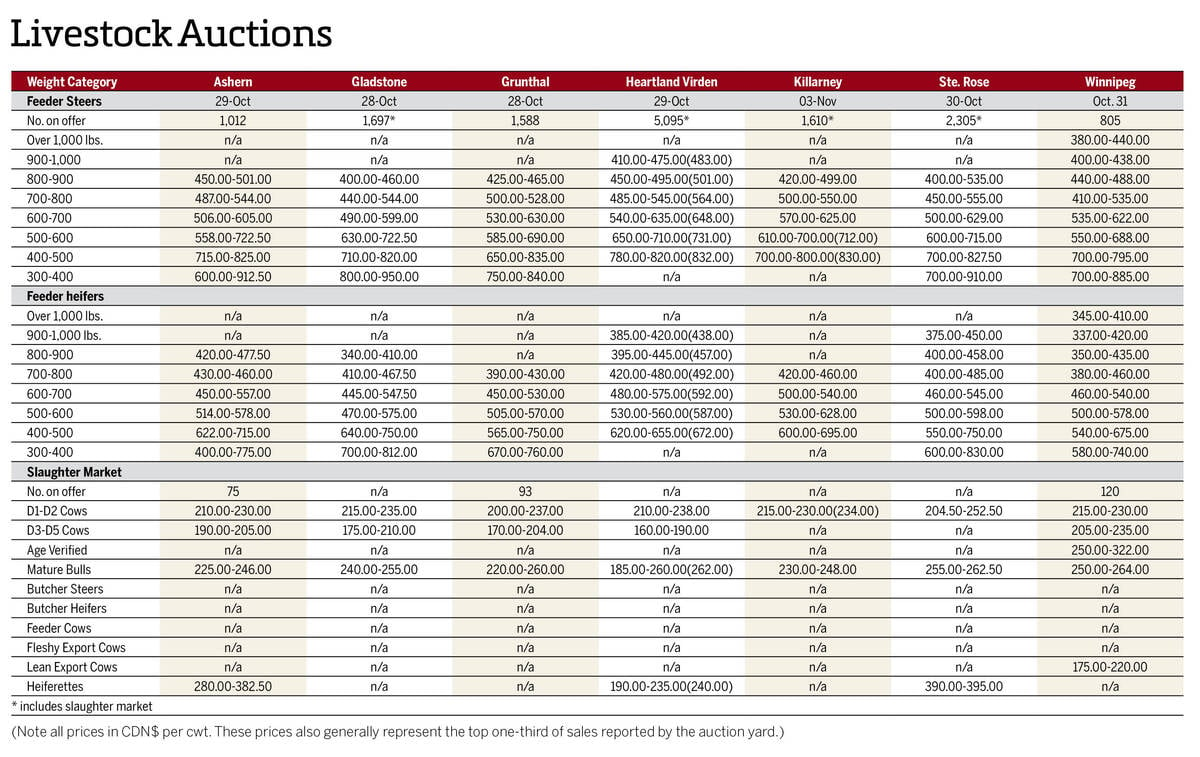It’s rather rare to see canola show a good measure of independent strength, but that happened this month. Contracts reached highs that haven’t been seen in a number of years. For example, the price of ICE Futures’ January canola contract had climbed almost $30 per tonne since the end of September alone. That was preceded by some upward movement during the summer.
While prices are still well away from the $700-plus per tonne seen in 2008, they are very far from the lows of $250 per tonne that came three years earlier.
Read Also

Manitoba cattle prices, Nov. 4
Manitoba cattle sale prices for the week of Oct. 28 to Nov. 4, 2025.
One trader deemed this month’s action to be a “strange little rally” that for the most part had no reason to exist. It nevertheless did, but there isn’t one central reason as to why — one reason being that traders were rolling out of their November contracts to cover their shorts.
Also, demand for canola is up, with exports increasing by a sizable 46.2 per cent from this time last year, according to the latest numbers from the Canadian Grain Commission. Given Canada’s continuing conundrum with China, its former top export customer, seeing almost 2.53 million tonnes of canola shipped abroad is undoubtedly good for Prairie farmers.
Domestic usage, at 2.18 million tonnes, is down 3.6 per cent so far this marketing year, but producer deliveries have grown by 18.8 per cent to nearly 5.07 million tonnes.
Despite canola’s independent strength, it garnered a measure of spillover support from the soy complex at the Chicago Board of Trade. China’s demand for soybeans gobbled up as much of this year’s crop out of Brazil as it could, before Chinese buyers switched to the U.S. market.
On a side note, concerns were raised when a few reports suggested China might be buying too much for its ports to handle, as it rebuilds its hog industry that was devastated by African swine fever.
On the whole, there has been a global uptick in edible oils, with European rapeseed and Malaysian palm oil seeing their share of the gains.
One thing that was quite odd with the sharp rise in canola prices was the increase in the Canadian dollar. Most often, when the loonie goes up, canola dips. This wasn’t the case this month, as the loonie pushed toward and over 76 U.S. cents.
With canola reaching those new highs, there was the inevitable profit-taking. On Oct. 22, prices dipped and selling continued into the following day. But since prices have increased so much, falling back a few dollars isn’t going to have much of an impact.
Trading in the November contract pretty much wrapped up by session’s end on Oct. 23. After that, there will be a few crumbs here and there until the contract officially ends mid-November.
As the market focuses on the January contract, eyes will turn to the next big report from Statistics Canada, to be released in early December, that will provide an idea of what canola yields were during harvest.
















